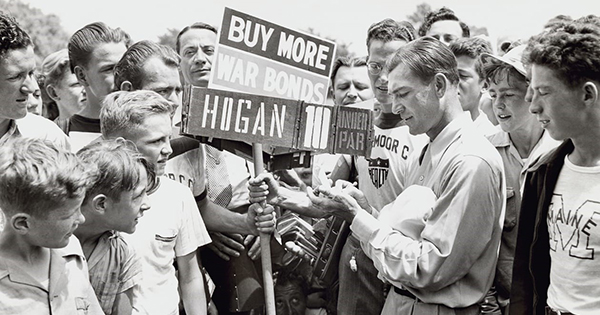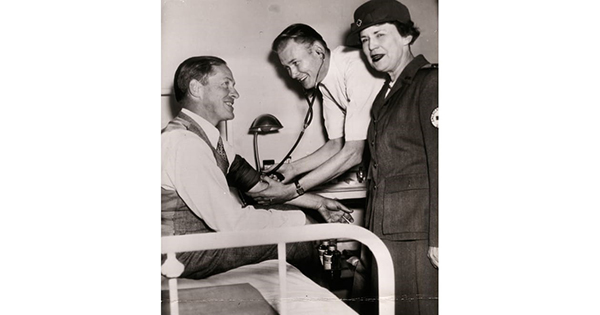by Mike Trostel, USGA
The specter of COVID-19 has permeated all aspects of our lives. From its devastating impact on lives and livelihoods to its disruption of everyday life, this virus has upended everything in its path, including the 2020 golf calendar.

The list of professional events that have been postponed or canceled is dizzying. All four men’s major championships were affected (with the British Open being canceled completely), and the entire schedules of the PGA Tour and LPGA Tour were put on hold. Competitive professional tour events are scheduled to resume in June, albeit without a gallery initially.
Additionally, many states had ordered their courses temporarily closed to encourage residents to stay at home. In place of recreational golf, innovation and creativity reigned, with people sharing their favorite golf photos and best trick shots over social media to fill the void.
As the calendar turned to 2020, it would have seemed unthinkable to have an April without the Masters Tournament, the Final Four or baseball’s opening day. But as the number of coronavirus cases rose steadily throughout the country, it became clear that no event which would draw a large crowd was safe. That was also true for the 120th U.S. Open, originally scheduled for June 18-21 at Winged Foot Golf Club in Mamaroneck, N.Y., less than 20 miles from the pandemic’s epicenter in New York City.
The championship’s new dates (Sept. 17-20) mean that the U.S. Open will be played in a month other than June for the first time since 1931. This would be the latest the U.S. Open has been played in the calendar year since 1913, when Francis Ouimet defeated Harry Vardon and Ted Ray in a playoff at The Country Club in Brookline, Mass., on Sept. 20.
This isn’t the first time the championship has been delayed or canceled due to external factors, though the circumstances are different.
In 1912 and 1913, the U.S. Open was postponed by a few months so that its dates did not conflict with The Open Championship and top players from America and Europe could play in both championships. While the events didn’t originally overlap, their dates were close enough that the journey by boat – 5 to 7 days each way at the time – meant that a player could not compete in both.
A few years later, in 1917, the United States entered World War I. The question that faced the governing bodies of various sports was the role of athletics in wartime society.
Shortly after President Woodrow Wilson asked Congress to declare war on Germany, representatives from the national associations for golf, tennis, amateur and intercollegiate athletics agreed to cancel all championships. The general feeling was that conducting these events would be unfair, given that many of the country’s top competitors were serving in the war.
The USGA embraced the national campaign to support the war effort. All championships, including the U.S. Open, were canceled in 1917 and 1918, and like other sports entities, the USGA worked in tandem with the American Red Cross to sponsor charity exhibitions, with proceeds assisting those who had been injured or displaced by the fighting.
While some of the game’s biggest names, such as Bob Jones and Walter Hagen, raised money through exhibition matches, others such as Ouimet and two-time U.S. Amateur winner Robert Gardner, served in the armed forces.
The War Department also endorsed the game’s inclusion in military camps at the time, citing “conclusive evidence that golf provides a form of recreational activity which plays an important part in counteracting the tension of intensive training.”
A generation later, the USGA halted championships once again due to World War II (1942-45). During this time, some courses like Congressional Country Club in Bethesda, Md., were turned into military training centers, while others like Augusta (Ga.) National Golf Club, were converted into farms to raise crops and livestock.

Like the players before them, many golf stars of the 1940s also contributed to the war effort. Prior to joining the Army Air Corps, the predecessor of the Air Force, Ben Hogan won the Hale America National Open Golf Tournament, held in 1942 at Ridgemoor Country Club in Chicago. Designed to be a substitute for the U.S. Open, the Hale America Open raised more than $25,000 for the United Service Organizations and the Navy Relief Society.
In addition to Hogan, other top players enlisted in the military, including major champions Sam Snead, Horton Smith and Jack Fleck, who joined in the D-Day invasion of Normandy’s Utah Beach as a quartermaster for the Navy. When the U.S. Open returned in 1946 after a four-year hiatus, it produced a fitting champion: Lloyd Mangrum, a World War II veteran who was awarded two Purple Hearts while serving as a staff sergeant in the U.S. Army.
There is much uncertainty about when things will return to normal after the pandemic, though if the current schedule holds, the 2020 fall golf calendar is poised to be the most notable autumn in the game’s history, with major championships and other significant events concentrated in roughly a four-month span between August and December.
While that still seems far away from where we currently are, history has proven that the country is resilient, and the game will surely thrive once again.
This article was originally posted on the U.S. Open website.
